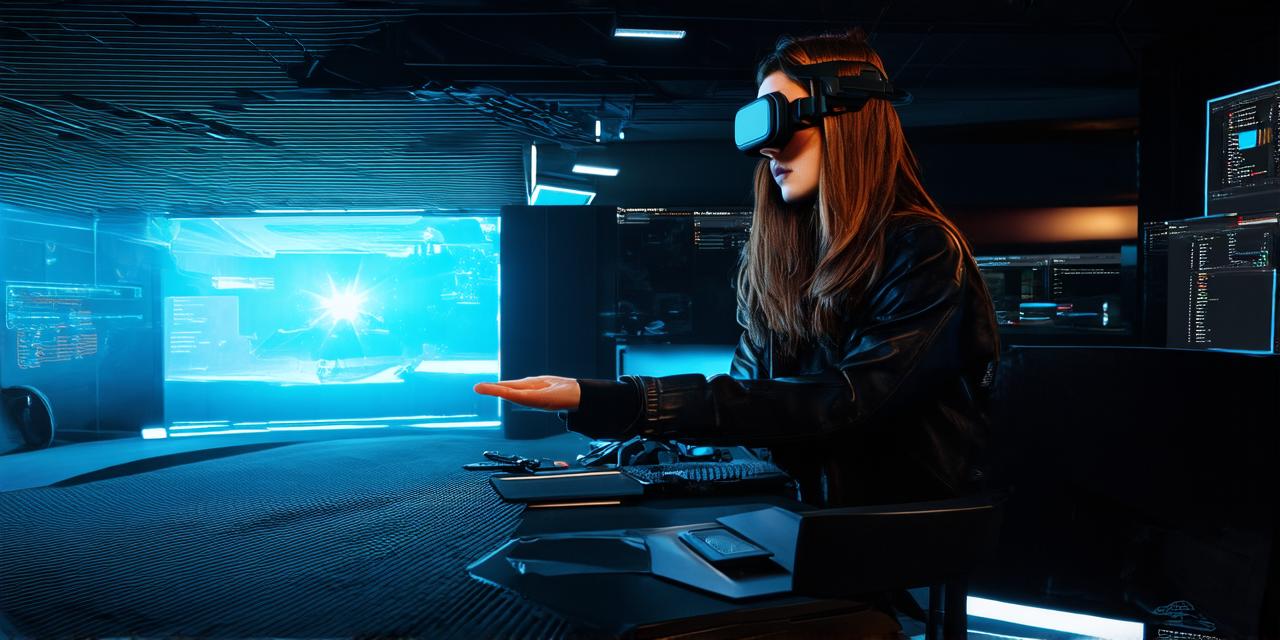Hardware Requirements
Before diving into software development for VR, it’s important to understand the hardware requirements. VR systems typically require a powerful computer with a dedicated graphics card, as well as specialized sensors such as trackers and cameras to capture user movements and create realistic environments.
Development Process
The VR software development process can be broken down into several stages, including conceptualization, prototyping, design, implementation, and testing. Each stage is critical for ensuring a smooth and successful project outcome.
Conceptualization:
During this stage, the team brainstorms ideas for the virtual environment, considering factors such as user needs, goals, and desired outcomes. The concept should be well-defined and clear, with specific objectives and requirements outlined.
Prototyping:
In this stage, the team creates a basic version of the VR environment to test and refine the design before moving on to more complex development. Prototyping allows for early feedback and can help identify any potential issues or challenges that may arise during the implementation phase.
Design:
During this stage, the team creates detailed designs for the virtual environment, including layout, graphics, and user interface. The design should be visually appealing, intuitive, and easy to use, with clear instructions and prompts to guide users through the experience.
Implementation:
This is the most technical stage of VR software development, where the team writes code to bring the virtual environment to life. Programming for VR requires specialized skills and knowledge, including proficiency in languages such as C++ and Unity, as well as an understanding of VR-specific libraries and tools.
Testing:
The final stage of VR software development is testing, where the team verifies that the virtual environment meets all requirements and performs as intended. Testing should include user testing to ensure that the environment is engaging and intuitive for users.
Programming Best Practices
Effective programming is essential for creating a seamless and immersive VR experience. Here are some best practices to keep in mind:
-
Optimize performance: VR applications require high-performance hardware, so it’s important to optimize code for maximum efficiency. This includes minimizing draw calls, reducing the number of objects on screen, and using efficient algorithms for rendering and animation.
-
Use motion sickness prevention techniques: Motion sickness is a common issue in VR environments, and can lead to user discomfort and reduced engagement. To prevent motion sickness, use techniques such as smoothing out camera movements and providing clear visual cues to guide users through the environment.
-
Implement intuitive controls: Users should be able to easily navigate and interact with the virtual environment using controllers or other input devices. Provide clear instructions and prompts to help users understand how to use the controls, and test extensively to ensure that they are responsive and intuitive.
-
Use sound and visual effects strategically: Sound and visual effects can enhance the immersive experience, but overuse can be distracting or overwhelming. Use sound and visual effects strategically, and test their impact on user engagement and enjoyment.
-
Consider accessibility: Accessibility should always be a top priority when developing VR software. Ensure that the environment is usable by individuals with disabilities, and provide options for adjusting graphics and other settings to accommodate different needs.
Real-Life Examples
There are many examples of successful VR software development projects in various industries. Here are a few:
-
Healthcare: Virtual reality has been used in healthcare to simulate surgical procedures, train medical professionals, and provide patients with immersive pain management experiences. For example, the company Virtually There provides virtual reality experiences for patients undergoing chemotherapy, helping them cope with the side effects of treatment.
-
Education: VR technology has been used in education to create engaging learning environments that enhance understanding and retention. For example, the company Nearpod offers VR field trips for students, allowing them to explore historical sites, natural wonders, and cultural landmarks from anywhere in the world.
-
Gaming: The gaming industry is one of the most well-known users of VR technology, with companies such as Oculus and HTC creating specialized hardware for gamers. Games like “Beat Saber” and “Job Simulator” have become popular favorites, demonstrating the potential for VR to create unique and immersive gaming experiences.
-
Training: VR has been used in training applications to simulate real-world scenarios, allowing professionals to practice skills in a safe and controlled environment. For example, the military has used VR simulations to train soldiers for combat situations, while airlines have used VR to simulate flight emergencies and other crises.
Summary
Virtual reality software development is a complex process that requires specialized knowledge and tools. However, with careful planning, effective programming, and user-centric design, VR can be an incredibly powerful tool for enhancing user experiences and driving innovation in various industries. Whether you’re a seasoned developer or just starting out, there are many resources available to help you get started on your VR software development journey.
